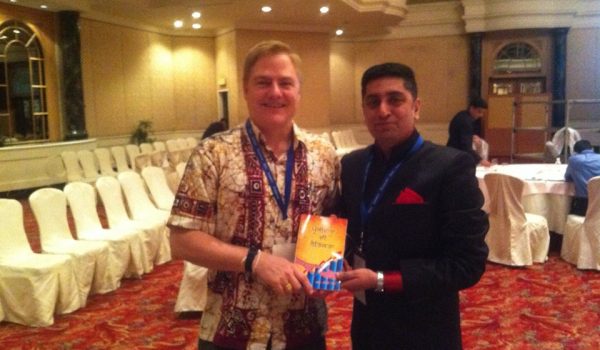I just landed a while ago and turned on my Kindle, turned on the wireless access, and read this example of confusion while waiting in the very long line for immigration: “In Chinese Factories, Lost Fingers and Low Pay.” (I was recently in Hubei, Guangzhou, and Shenzhen.) See if you can count the inanities.
A few hints:
“His brother, Xu Wenjie, 18, said the two young men left their small village in impoverished Guizhou Province four months ago and traveled more than 500 miles to find work at Huanya.” Maybe they were mistaken, but people rarely repeatedly and systematically act to worsen their situations. There is no mention in the article of the conditions in Guizhou Province, which might help to provide context for the article.
“Here in the Pearl River Delta region near Hong Kong, for example, factory workers lose or break about 40,000 fingers on the job every year, according to a study published a few years ago by the Shanghai Academy of Social Sciences.” How many people work in the Pearl River Delta region near Hong Kong, and how does that compare to how many fingers were lost or broken in the past, or among similarly large groups of people elsewhere? How many were broken and how many lost? Why bother checking or making such comparisons?
“As long as life in the cities promises more money than in rural areas, they will brave the harsh conditions in factories in this and other Chinese cities. And as long as China outlaws independent unions and proves unable to enforce its own labor rules, there is little hope for change.” Outlawing labor unions is indeed a terrible thing to do. It should be changed. But as “life in the cities promises more money” and wages are rapidly rising, there is a LOT of hope for change. It’s changing as we speak.
“At the same time, rising food, energy and raw material costs in China â?? as well as a shortage of labor in the biggest southern manufacturing zones â?? are hampering factory ownersâ?? ability to make a profit.” A shortage of labor means that employers have to raise wages (and wages include money and working conditions, both of which are improving) to attract workers. A shortage of labor is not a bad thing for laborers. (Duh.)
â??’This is a problem that has been difficult to solve,’ Liu Kaiming, the director of the Institute on Contemporary Observation, which aids migrant workers in nearby Shenzhen, said of sweatshop labor. ‘China has too many factories. The workersâ?? bargaining position is weak and the governmentâ??s regulation is slack.’â? How does a large number of factories competing for workers make their “bargaining position weak”? That’s quite a novel interpretation of labor economics.
It’s a shame to come back and find the first thing I read a case of China-bashing based on simple ignorance and laziness. China has its problems, but falling wages and worsening labor conditions are definitely not among them.









